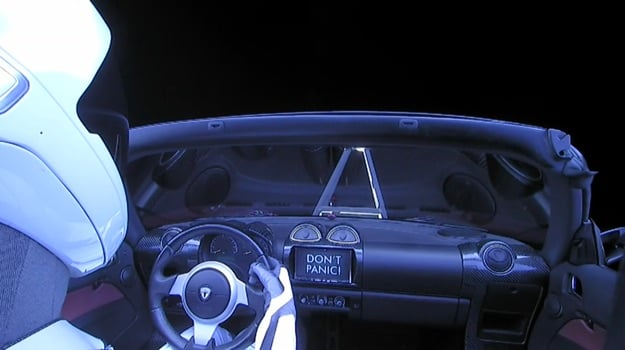SpaceX Successfully Launches Falcon Heavy, Elon Musk's Tesla Roadster Is Headed To Mars
As scheduled, two of the Falcon 9 boosters performed boost back burns once separated from the central booster, and made perfect simultaneous landings back at Cape Canaveral Air Force based on the Landing Zone 1 and Landing Zone 2 pads. The central booster than performed its own boost back burn, but SpaceX cut off the live feed before we could see if it landed on the “Of Course I Still Love You” autonomous droneship stationed in the Atlantic Ocean. Given the abrupt cutoff, we have the feeling that the center core was lost. But two out of three ain’t bad!
As for the Roadster, it has a passenger onboard -- a dummy astronaut that is wearing one of SpaceX's Crew Dragon spacesuits. According to comments made by Musk pre-launch, the vehicle is loaded with three cameras that “should really provide some epic views if they work and everything goes well.” And as you can see by the images below, there truly are some awesome shots beaming down from the Roadster.



SpaceX will be demonstrating a new capability with the Falcon Heavy, in which the upper stage will coast for approximately six hours for a direct injection into a geostationary orbit (GEO). This is twice as long as the Falcon 9 can coast. Once that six-hour coast is completed, the upper stage will relight its engine for the Roadster's trans-Mars injection.
What about the future of Falcon Heavy? Well, Musk says that after today's successful launch, the next "mission" could occur within three to six months. There's no word on if paying customers will have cargo aboard that flight, or if it will be another test run.

Looking farther out, Musk is also opining about a Falcon Super Heavy, which add two additional boosters (bringing the total to five). When combined, Falcon Super Heavy would have roughly 9 million pounds of thrust, putting it ahead of the 1960s-era Saturn V (7.6 million pounds of thrust). The current Falcon Heavy has roughly 5.5 million pounds of thrust at launch.

